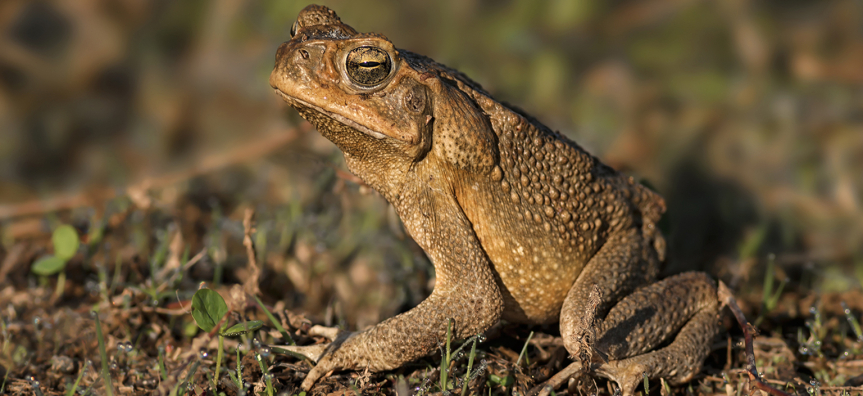
Cane Toads were introduced to Queensland from South America in 1935 in an unsuccessful attempt to control cane beetles, a pest of the sugar cane industry. While cane toads are rarely found on the Northern Beaches, sightings are expected to increase and these pests are ones to look out for.
Cane Toads on the Northern Beaches
Cane Toads spread into the Northern Territory and northern NSW. Distribution in NSW is patchy but these pests have been moving south at a steady rate, three to four kilometres each year. While a handful have been found on the Northern Beaches, it is suspected they were transported unwittingly under cars or trailers.
Why are Cane Toads a problem?
Cane Toads have no natural enemies and compete for food with other carnivores, preying on small vertebrates like skinks and poisoning larger predators such as raptors and goannas. Cane Toads have a lethal toxin to many animals, threatening the survival of some of our native species.
Cane Toad Control Programs
There is currently no efficient method for significantly reducing established populations. Trapping has some potential to eradicate small populations or create a barrier to expansion, but is labour-intensive. The potential for biological control has been investigated, but is not used at this stage.
What can you do?
If you think you have found a Cane Toad, trap it in a suitable container and report it to Council as soon as possible or complete a cane toad sighting form. It is likely the toad will need to be examined to determine if it has been breeding.
Tips for handling Cane Toads
Take care when handling Cane Toads and wear rubber gloves.
The toxin is produced in their shoulder glands and is present in the skin of the back. If squeezed tightly the toxin may be sprayed from the glands. If toxin gets in your eyes, nose or mouth, seek medical attention.
